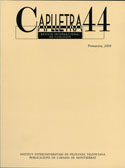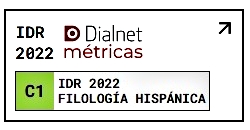Un fals aparegut en el «Tirant lo Blanch»
DOI:
https://doi.org/10.7203/caplletra.44.4798Keywords:
Tirant lo Blanc, Rats and Cats, After Death Appearances, Discretio Spiritum, Knightly Parody, Hipòlit Abstract
Abstract
In the chapters CCXXXI-CCXXXIIII of Tirant lo Blanc, there are two
comical scenes where Carmesina and Tirant attempt to keep their love a secret. Carmesina justifies a night riot happened in her chamber by saying that a rat went through her face; whereas Tirant pretends to be a ghost when he runs away from the chamber into the orchard. The dependence of these two episodes opposes the nature of several characters, but the scene that best exhibits the knights’ ambivalent morality is the appearance of Tirant –with the spells of Hipòlit and the viscount of Branches. The comparison of this case with chapter XIX of the «Quixote», and with other works of the modern age, allows to determine how the forms and the meanings of a same commonplace evolve. The appearance of «Tirant» has to be linked especially to three
mediaeval traditions: in the first place, the «fabliaux» and the «novelle», like the «Llibre de fra Bernat» or the «Decamerone»; in the second place, the treaties of ghosts, according to the outlines of «De spiritu Guidonis»; in the third place, the motif of the knightly
adventure, in the way of Chrétien de Troyes. This is how Joanot Martorell balances and adapts diverse materials to the situations that the case brings up.
 Downloads
Downloads
Downloads
Published
How to Cite
-
Abstract416
-
PDF (Català)321
Issue
Section
License
Authors submitting work to Caplletra for publication must be the legitimate holder of the usage rights. Legitimacy for the purposes of publishing the work must also include images, tables, diagrams and any other materials that may complement the text, whether they are the author of such material or not.
Copyright: on publishing their work in the journal, the author grants Caplletra. Revista Internacional de Filologia usage rights (reproduction, distribution and public communication) for both the paper printed version and for the electronic version.
All work published in Caplletra is covered by the Creative Commons license type Attribution-NonCommercial-NoDerivatives 4.0 (CC BY-NC-ND 4.0).
RESPONSABILITY
Caplletra. Revista Internacional de Filologia does not necessarily identify with the points of view expressed in the papers it publishes.
Caplletra. Revista Internacional de Filologia accepts no responsibility whatsoever for any eventual infringement of intellectual property rights on the part of authors.






